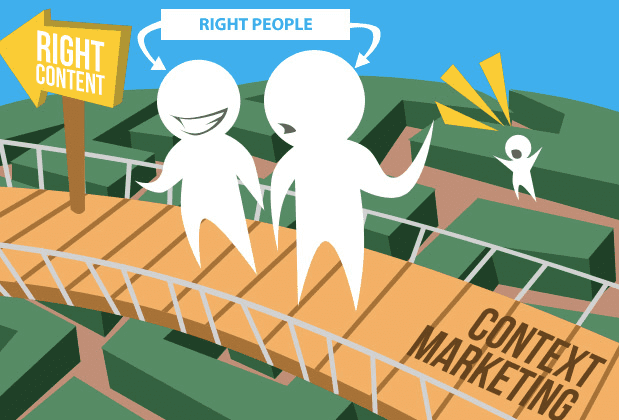As far as fortunetelling is concerned, there’s one thing we can be sure of: email marketing will still be an important marketing channel. If you think that email marketing is all about sending spammy emails, think twice. Nowadays, it’s of the most efficient sales tools and a great tool to build customer relationships.
Email marketing trends in 2017 at a glance
As far as fortunetelling is concerned, there’s one thing we can be sure of: email marketing will still be an important marketing channel. If you think that email marketing is all about sending spammy emails, think twice. Nowadays, it’s of the most efficient sales tools and a great tool to build customer relationships.
Technology developments that appeared in the past aren’t just developments anymore, but major trends. Let’s take mobile internet. Mobile broadband has been finally democratized and people are taking advantage of it. Many Internet users read emails and shop from their phones. With the current internet expansion, everyone and everything is connected. Therefore, various systems, databases and marketing channels can be combined to one’s content to offer each person a holistic customer experience.
What are the four email marketing trends in 2017 that will determine the future of email marketing? Expect more quality, more relevance, more attention to user needs and data protection. This powerful mixture will lead to better marketing results and they will become success factors. These are the trends you should watch out for next year:
1. Mobile commerce will be on the rise
Consumers turn increasingly to mobile devices for buying. Mobile online shops and shopping apps drive online sales. The contributing factors to the state of affairs are: reliable and fast mobile connections, powerful smartphones, the spread of responsive design as well as improved usability of mobile shops and apps.
According to ecommercenews, mcommerce in the UK is set to reach 86 billion dollars in 2016. And according to statistica, mobile retail ecommerce sales are set to amount to 115 billion dollars in the USA. These numbers are expected to grow even further in the next years. Therefore, newsletters optimized for mobile are a must. The goal is to provide customers with a completely smooth customer journey on a mobile turf. You start with a responsive design email that takes a customer to a suitable landing page, mobile shopping cart and, naturally mobile checkout system. Only if all of these steps make for a seamless experience, then you can talk about success and tap into the mobile commerce potential.
How to create responsive design emails
Here are 5 essential tips for transforming your message into a responsive email design email for mobile:
– Going for responsive design is the only way to ensure your emails are error-free. Once you’ve implemented it, the email design will automatically adapt to the screen size, regardless which device your client uses
– You should always choose a single column layout. Going for another layout might render your email unreadable.
– Make sure the images have a flexible width to fit the screen size. Text within images shouldn’t be too small.
– Links and buttons should be larger than in the desktop version so they can be easily clicked on.
– Clickable elements should be arranged in such a way that they will be easily reachable with one hand only
Fortunately, creating responsive emails isn’t difficult anymore. Gmail, one of the most widely used email clients, finally supports responsive design. Newsletter2Go offers free newsletter templates that are responsive by default.
2. Context marketing
Context marketing is one of the new keywords in online marketing as well as one of the major email marketing trends in 2017. Thanks to better targeting technology and more data on customer behavior, people can be addressed anywhere, at any time. Cross-channel marketing isn’t problematic anymore. You can customize a newsletter by linking multiple platforms. For example, you can take into account your customer’s surfing behavior, purchase history in the offline world as well as social media activities.
The comes email automation, which enables you to send out content at the right time. With automated emails, your newsletters can relate to the recipient’s current situation. Depending on their action (that could be a purchase), they receive a suitable email with personal, which refers to their recent action. Just make sure your emails aren’t too personalized, which might scare some customers. How to struck the right balance? Read on.

3. More Quality
Newsletter is a contemporary advertising campaign, which is very popular with both companies and customers. The number of emails sent per day is constantly increasing, and the recipient demands are steadily increasing. If you want your newsletter to be successful, it must be of the utmost relevance, bring an added value and relate to the recipient. There is little tolerance for the mass emails, which aren’t personalized.
Recipients, who have subscribed to a company’s newsletter, are usually spammed without mercy. If the newsletter content has become too familiar or was sent to the wrong target group, your open rates will suffer. Obviously, this wouldn’t help you build customer relationships. How to send tailored newsletters? You need to segment your contacts, for example by their activities or interests. Don’t despair if you don’t have enough data. Let your customer decide which content they wish to receive. Asking you customers for feedback isn’t difficult. Maybe they don’t want to read general newsletters with every single update. However, they might be interested in promos, new features, events… just ask them. Once you start sending out various newsletters to different groups, you will see a smaller unsubscribe rate. Then, you can start building customer loyalty. Read more about building customer relationships with newsletters.
4. Data protection: The new EU General Data Protection Regulation
Data protection will be one of the major email marketing trends in 2017. As of 25 May 2018, the new General Data Protection Regulation will come into effect across Europe. In contrast to the existing EU directive, this regulation will be legally binding for all recipients within the EU member states. It will apply to all companies that use or process personal data of EU citizens.
The upcoming regulation clearly shows the increasing importance of data protection. Commercially sent emails will face further scrutiny. Companies won’t be able to send emails to individuals who haven’t explicitly agreed to receiving communications. The regulation makes sense, because anyone who decides to subscribe to a newsletter is most likely to be interested in what the company has to offer.
 Stefania Goldman is a passionate storyteller at Newsletter2Go. She lives and breathes all things technology.
Stefania Goldman is a passionate storyteller at Newsletter2Go. She lives and breathes all things technology.

